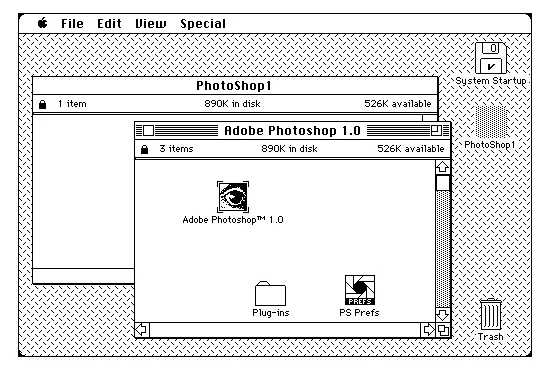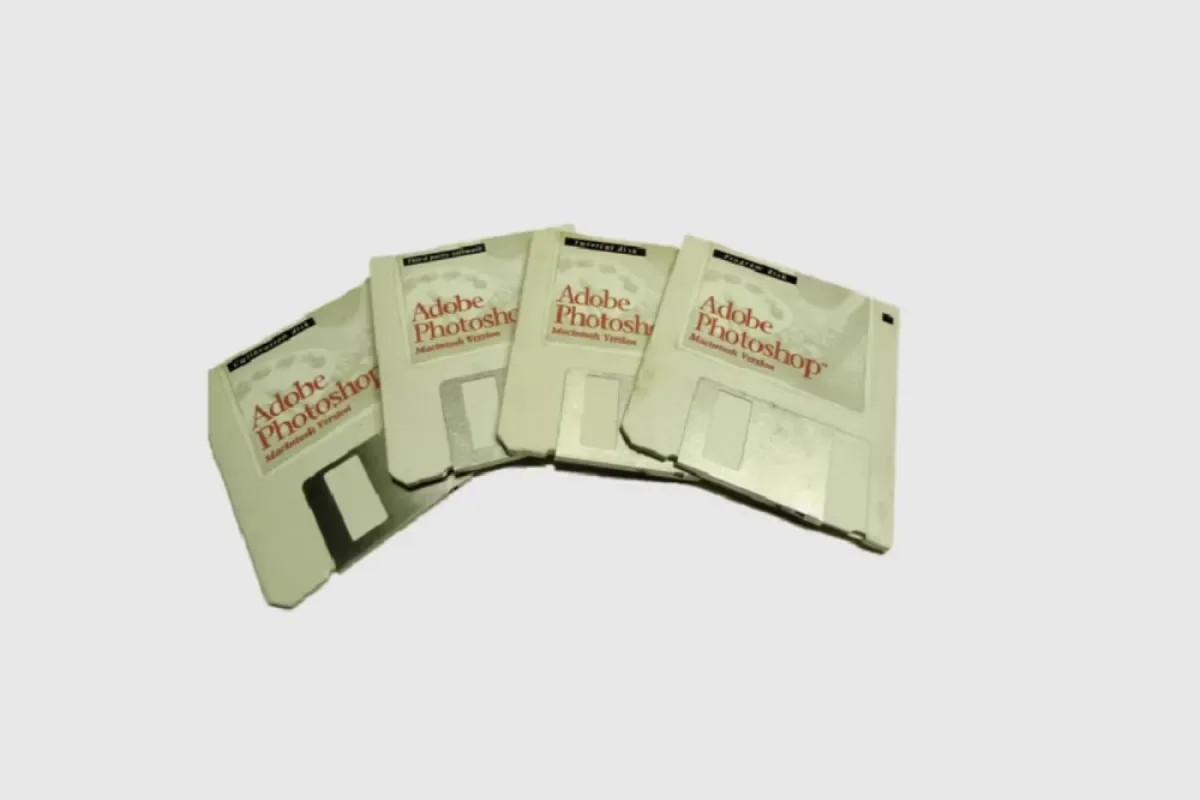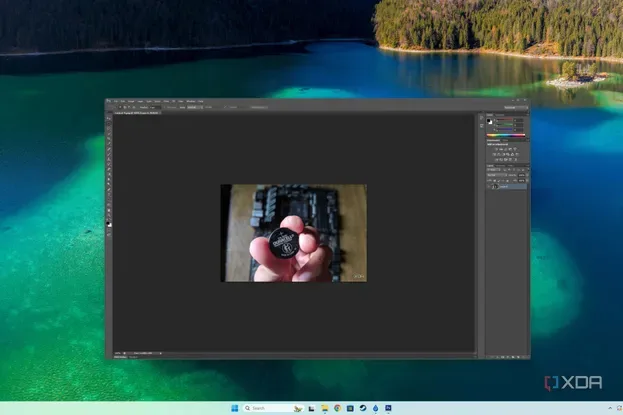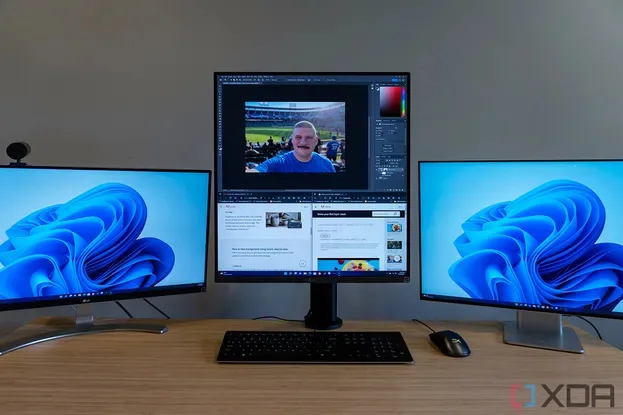
Image editing tools, especially Adobe Photoshop, have been crucial in the computing world since the early 1990s. Photoshop, initially a third-party app for the original Mac OS, became popular for its user-friendly image manipulation features. Despite many other editing tools emerging, Photoshop remains a top choice, setting standards and inspiring other creative software.
Adobe released the first version of Photoshop on February 19, 1990, which proved out to be a significant moment in digital imaging history. This release laid the foundation for Photoshop’s growth into the powerful software it is today. In 2024, Photoshop remains a fundamental tool in design, highlighting its lasting impact on the industry.
Before Photoshop: The Legacy of Display
The history starts in the year 1987, where a Ph.D. student Thomas Knoll began coding Display, an app for converting monochrome images to grayscale on his Macintosh Plus. His brother, John Knoll, an employee in visual effects organization Industrial Light & Magic, saw the potential and urged Thomas to expand Display into a full image editor.
Within a year, the brothers developed version 0.63, or “Bond,” which was the first Photoshop prototype. Thomas also approached Barneyscan, a desktop scanner company, in the same year. In 1988, desktop scanners lacked appeal due to limited image editing capabilities, which motivated Barneyscan to seek innovative solutions by attracting users to their 24-bit scanners.
Photoshop, developed by Knoll Brother’s, proved out to be the solution. Despite its early stage, it offered features like resizing, sharpening, and transforming images, as well as modifying color spaces of digital images. Previously, only expensive tools could perform such tasks, costing over $1M. With Photoshop and Barneyscan’s scanners, users could edit and scan images for just $15,000, revolutionizing image editing accessibility.
Barneyscan began marketing a rebranded edition of Photoshop

Barneyscan initially showed interest in buying Photoshop. Thomas Knoll proposed selling the software for $300,000 and 18% of its income. Further, Barneyscan offered a different deal with a $250 royalty on each scanner-Photoshop bundle sold. The Knoll brothers accepted this offer, leading to the integration of Photoshop, now called Barneyscan XP, into the scanners, which only runs in the proprietary hardware.
During this time, John Knoll demonstrated Photoshop to Apple and Adobe in Silicon Valley. Impressed, Adobe decided to acquire the license to distribute Photoshop in September 1988. This was a crucial moment, shifting Photoshop from a partnership with Barneyscan to a distribution agreement with Adobe. On February 19, 1990, Adobe released the first commercial version of Photoshop for the Mac OS, laying the groundwork for its future as a leading image editing tool.
The Fruitful Evolution of Photoshop

After its release, Adobe’s version of Photoshop quickly gained popularity among users, leading to a significant increase in its user base over the following years. What set Photoshop apart and solidified its status as a revolutionary tool was its ability to make image retouching and modification accessible to everyday users. Previously, editing a digital picture could cost hundreds or even thousands of dollars, but with Adobe Photoshop, all that was required was a Macintosh system and a one-time payment of $895 to retouch as many images as desired.
Recognizing Photoshop’s potential, Microsoft decided to port Adobe Photoshop 2.5 to Windows in 1993, exposing the software to an even larger user base. During this period, Adobe’s agreement with the Knoll brothers included a royalty payment for every Photoshop sale. This arrangement eventually led to Adobe acquiring the rights to Photoshop from the Knoll brothers in 1995 for $34.5 million.
This acquisition marked a significant milestone in Photoshop’s history, as it ensured Adobe’s full control over the software’s development and distribution, further solidifying Photoshop’s position as a leading image editing tool.
Photoshop: 34 Years of Transforming Digital Imaging





Since its acquisition by Adobe, Photoshop has undergone significant evolution, adding numerous features that have made it synonymous with image editing. By the early 2000s, Photoshop had become the go-to tool for professionals and enthusiasts alike, leading to a proliferation of plug-ins and add-ons aimed at enhancing its capabilities.
In October 2003, Adobe launched Photoshop CS, a milestone release featuring a revamped user interface and further expanding the software’s functionality. The biggest shift came in 2013 when Adobe transitioned Photoshop and other Creative Suite applications to a subscription-based model as part of the Creative Cloud. This move allowed users access to the latest versions of Photoshop and other Adobe apps for a monthly fee, rather than purchasing perpetual licenses. In 2017, Adobe discontinued Photoshop CS6, the final version of the app that offered perpetual licenses, from its store.
And finally, 34 years after its groundbreaking release, Adobe has integrated generative AI capabilities into its application suite, in line with the trend of AI revolutionizing industries. Despite undergoing significant changes since its inception, the continued popularity of Photoshop is a testament to its enduring success.
What are your thoughts on Adobe Photoshop? Whether you’re a seasoned user, a casual editor, or someone who’s just curious, I’d love to hear your opinions and experiences with this iconic software. Share your experiences, opinions, or any memorable moments you’ve had with Photoshop in the comments below.



